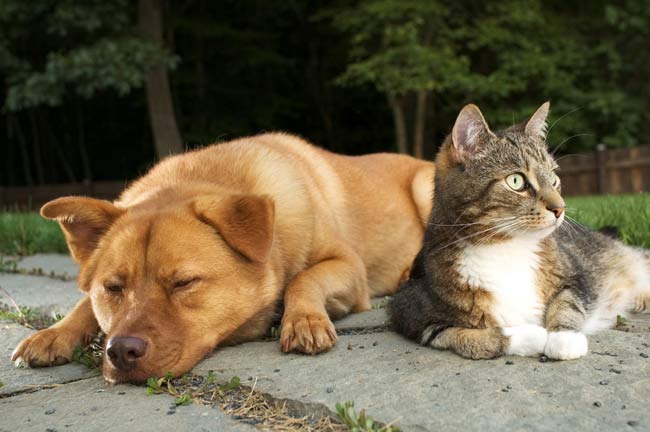Don't Just Blame Cats: Dogs Disrupt Wildlife, Too

Though they seem so natural in our homes, cats and dogs are natural predators, too. Most will attack birds, lizards and smaller mammals when given the chance, and scientists have demonstrated how their explosive populations can upset ecosystems.
The scourge of domestic cats has been thrown into the spotlight recently. A campaign in New Zealand is pushing to get rid of cats, or at least keep them confined indoors, where they can't prey on kiwis and other native birds. And a study out last month attached some staggering figures to cats' carnage in the United States: it found that the felines kill between 1.4 billion and 3.7 billion birds and between 6.9 billion and 20.7 billion small mammals, such as meadow voles and chipmunks, each year.
But defensive cat lovers should rest assured — a new study from researchers at the University of Oxford reminds us that domestic dogs are also killers and disease-spreaders that can pose conservation problems when they're allowed to roam free outdoors.
Generalizing the ecological impact of the world's estimated 700 million domestic dogs can be tricky since they are treated very differently across cultures — some kept in handbags, others chained outside or left to stray. In any case, the researchers say that free-roaming dogs (ones without an owner or otherwise left to run free) are thought to account for about 75 percent of the global dog population, and their interactions with other animals can be problematic. [The 10 Most Popular Dog Breeds]
Oxford researchers Joelene Hughes and David W. Macdonald reviewed 69 studies on canine-wildlife relations in rural areas. All but three of these articles found that dogs had a negative impact, mostly due to predation.
Free-roaming dogs can especially cause harm on islands, where ecosystems tend to be vulnerable in the face of non-native predators like dogs. For instance, in the late 1980s, researchers found that a single German shepherd on the loose in New Zealand's Waitangi State Forest was responsible for killing up to 500 kiwis. The dog had a collar, but was unregistered, and its owner was not found.
In another example from 2006, 12 ownerless dogs were thought to be wiping out populations of the endangered Fijian ground frog on the tiny Viwa Island. The Fijian villagers' solution was to "befriend" the dogs by feeding them scraps of food. Ten of the canines were eventually tamed and shipped off the island and the remaining two were killed.
Sign up for the Live Science daily newsletter now
Get the world’s most fascinating discoveries delivered straight to your inbox.
The researchers note that much of the scientific literature on the problems posed by dogs focuses not on conservation issues, but health risks to humans. While canine rabies has been eradicated in the United States, dogs are responsible for nearly all of the 55,000 rabies deaths that occur worldwide, mostly in Asia and Africa. And rabies can disrupt wildlife, too, the researchers said, noting that dogs have been blamed for spreading the disease among several other animal species in Africa, including the extremely rare Ethiopian wolf.
"Despite the increasing recognition of the potential problem dogs may create for wildlife, few solutions to conservation issues were offered by the literature reviewed, particularly to non-disease related problems," Hughes and Macdonald write. "Local people and authorities may be reluctant to undertake dog population management or control because of the close nature of dog-human relationships, aversion to the methods that may be used to remove dogs" — like poisoning and shooting the feral ones — "lack of adequate alternative care options, and perceived prohibitive costs of action."
Their research was detailed last month in the journal Biological Conservation.
Follow LiveScience on Twitter @livescience. We're also on Facebook & Google+.










